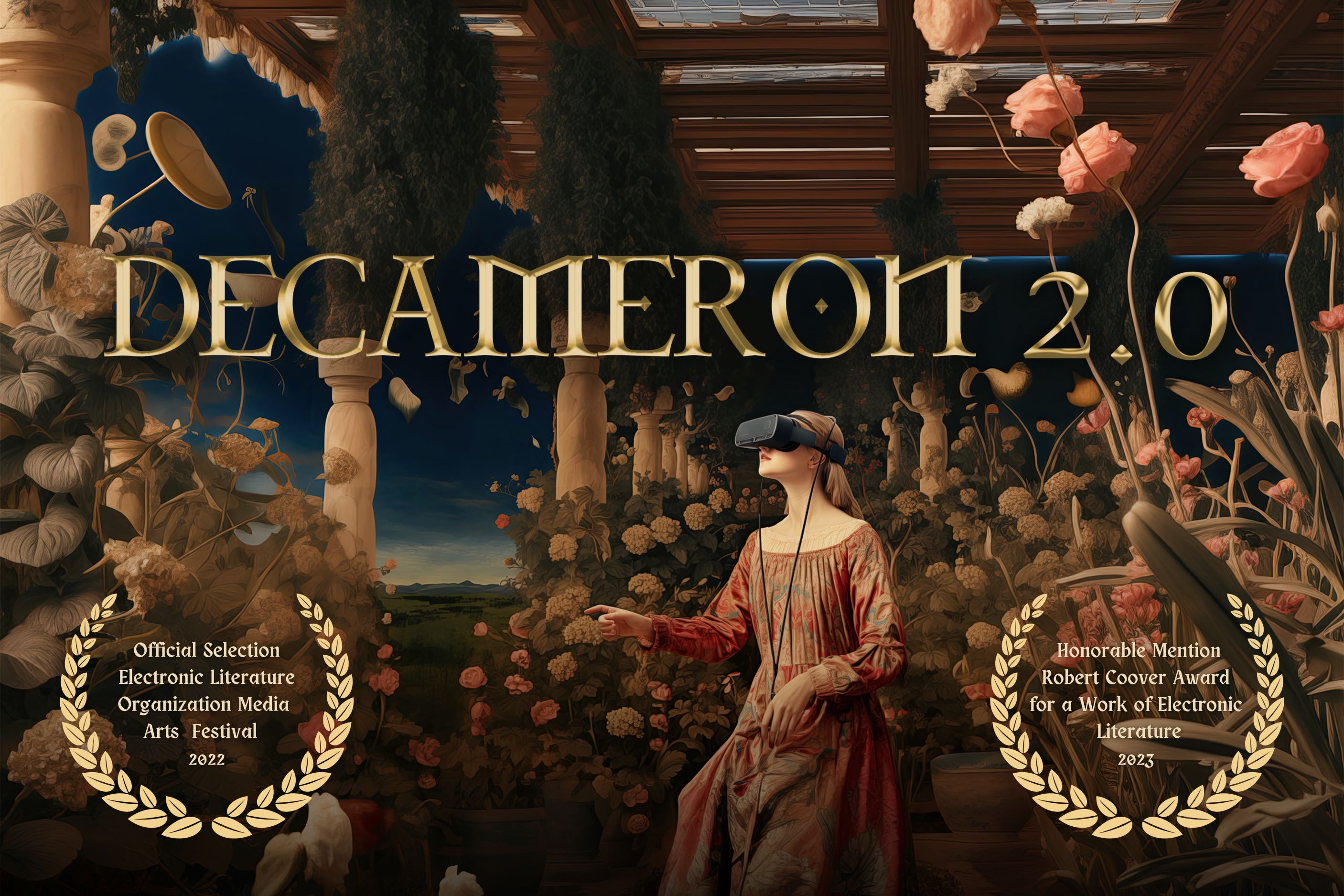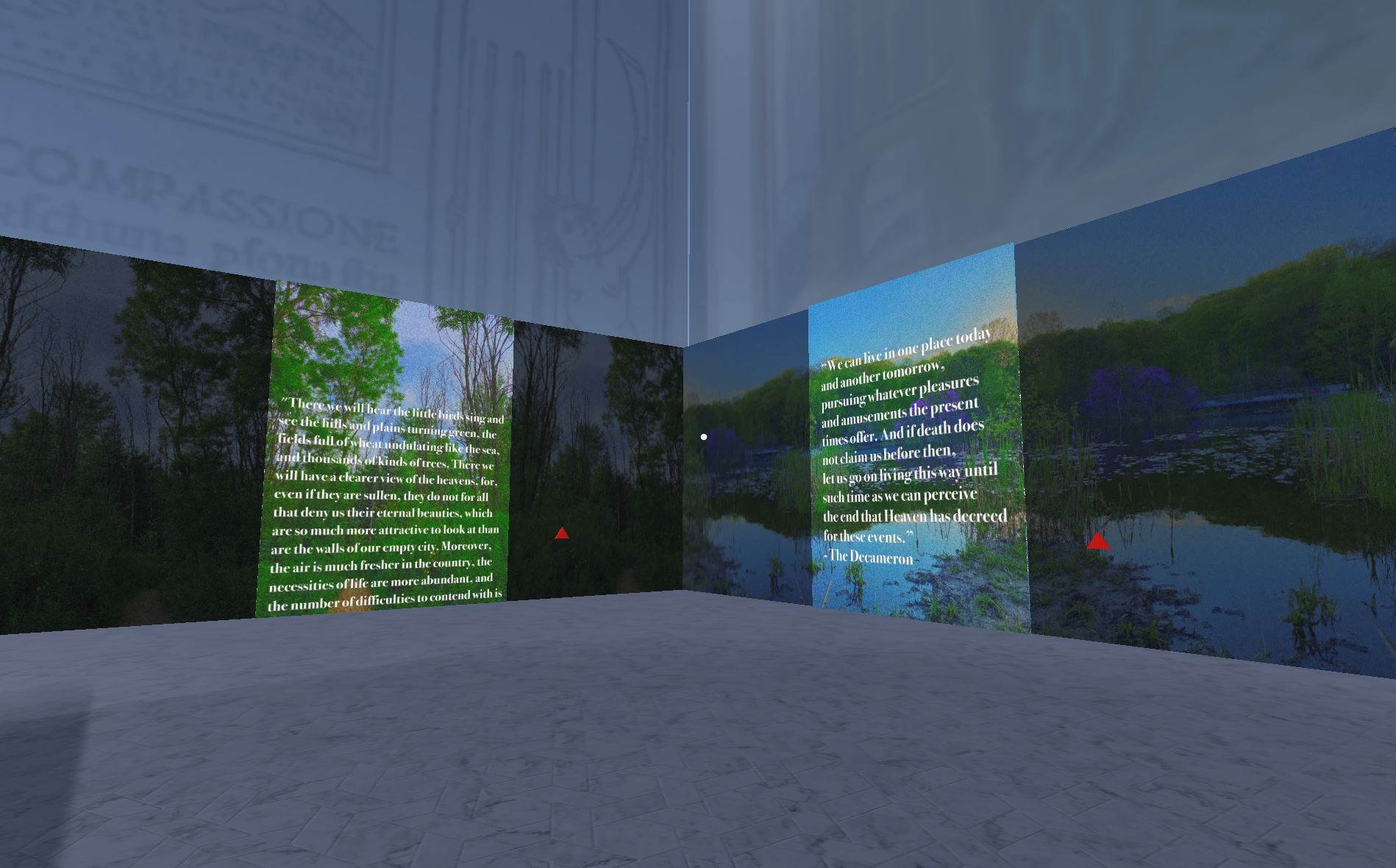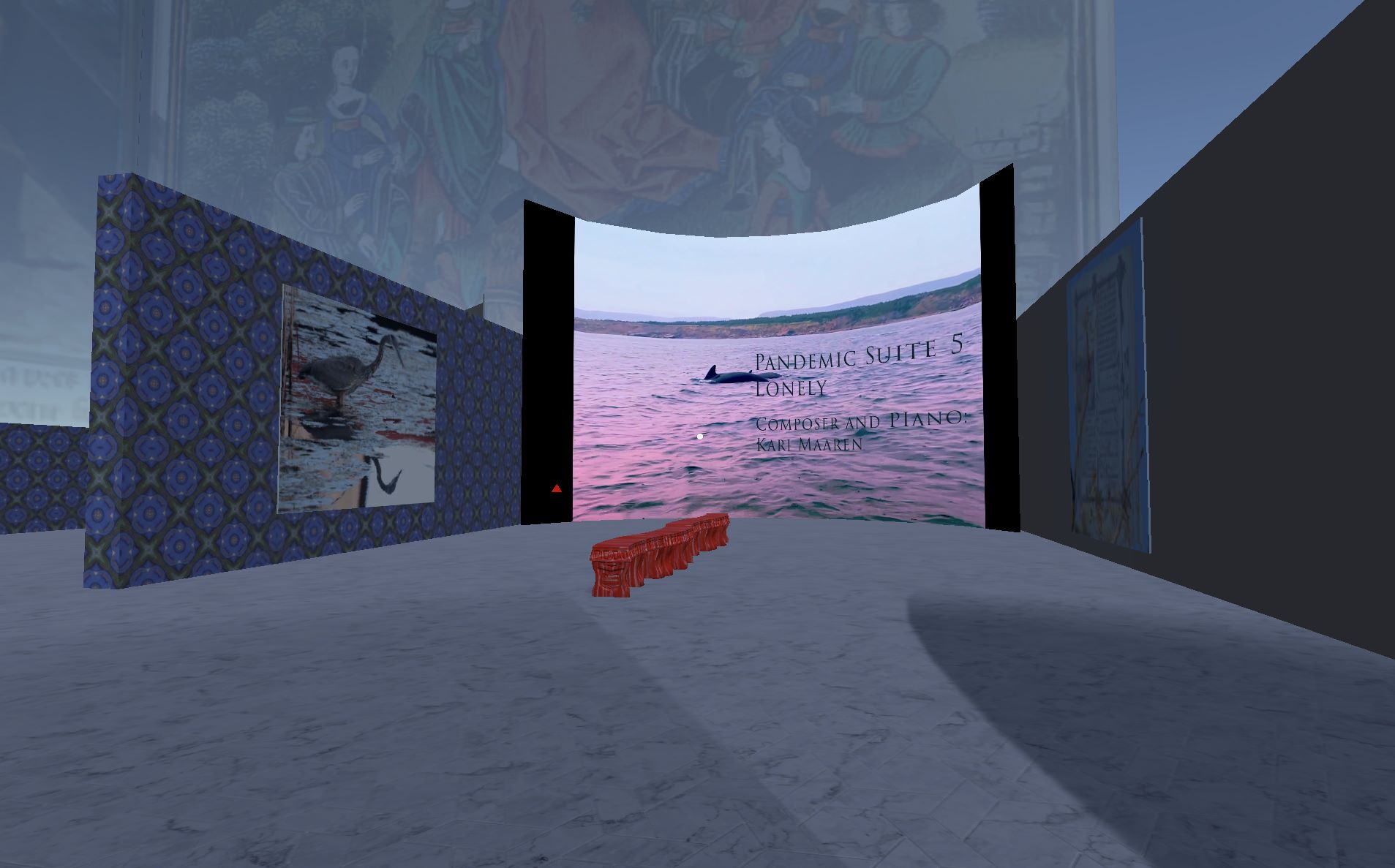2023 Robert Coover Award Honorable Mention
English Department members Monique Tschofen and Kari Maaren, together with The Decameron Collective, (external link) an interdisciplinary group of nine scholar-creators from across Canada (Jolene Armstrong, Athabasca U; Kelly Egan, Trent; Lai-Tze Fan, Waterloo; Caitlin Fisher, York U; Angela Joosse, Canadian Research Knowledge Network; Siobhan O’Flynn, University of Toronto; Izabella Pruska-Oldenhof, Toronto Metropolitan University) win Honorable Mention for the 2023 Robert Coover Award for a Work of Electronic Literature, an international award given for the best work of electronic literature of any length or genre.

“This Honorable Mention is a real honour,” Tschofen notes: “The namesake of this award, Robert Coover, was a pioneer postmodernist short story novelist and short story writer whose works have been adapted into film and who has collaborated with luminaries like Art Spiegelman. His public essays on literary hypertext are seminal in the field, and he supervised the most important electronic writers of this generation.” “It puts us in the company of luminaries in Electronic Literature who showed the world how digital environments could challenge and expand literary print cultures,” Maaren adds.
The Decameron 2.0 is an interactive digital storytelling world created in WebGL, designed in dialogue with Giovanni Boccaccio’s medieval frame narrative set in Florence during the Great Plague (1353). Boccaccio’s The Decameron offered literature a model for uniting heterogenous stories inside one frame narrative. In the book, ten storytellers retreat from a plague-swept city to walled gardens where they entertain and distract each other, each telling the group one story per day for ten days. This work of literature stood apart from literary works before and after because of its representations of strong, complex women storytellers. “It seemed logical, as the world was shutting down in March of 2020 and these nine women started to meet over Zoom to tell stories to each other for us to return to and really think about this source text,” says Tschofen.
The Decameron 2.0’s explorable online gallery spaces feature one-hundred short, poetic co-created sound, text, still image, and film works that together offer a living archive of women’s lives in times of catastrophe. Motherhood, sisterhood, and friendship are persistent themes. Many of the works in the Decameron 2.0 work like palimpsests, layering archival assets from the ancient and medieval manuscript tradition with contemporary photography and film in order to underline the continuities between that time and ours.
The Decameron Collective understands the work as Research Creation – a research method that has been a category acknowledged by SSHRC for well over a decade and is at the core of one of the three specializations of Toronto Metropolitan University and York University’s Joint Graduate Programme in Communications and Culture program. Research creation methods experiment with new ways of posing and answering critical research questions. TMU’s student-led SORCE Collective (external link) and the TMU library’s Collaboratory are but two of the University’s many critical seedbeds for research creation.
“I had been teaching and publishing about research creation and digital humanities methods for over twenty years, and supervised many groundbreaking doctoral dissertations and MA projects using research creation methods,” Tschofen said, “but had always been an outsider looking in. Working with a group of immensely talented storytellers to create first, and then theorize what we made through our respective disciplinary approaches, has been tremendously generative. We have exhibited this work internationally four times, including in Portugal, Japan, Toronto, and Calgary. The work has led to the development of workshop methods that we successfully brought to international audiences of feminist philosophers, electronic literature scholars, and digital humanities scholars. We have multiple published and soon-to-be published academic articles about the work that underline its multimodal intertextuality, situating it, for example, in relation to the medieval manuscript tradition of marginalia and palimpsests, and we have contextualized the work in relation to contemporary practices of autoethnography as well as feminist care ethics.”
Working collaboratively on digital platforms allowed Kari Maaren, a literary medievalist, novelist, composer and musician, and comics artist, to draw her storytelling and musical interests together. Maaren composed a series of musical improvisations about the pandemic lockdown. Collaborators in the collective then provided visual and cinematic treatments of the works. These musical works acted to tie the individual galleries of the Decameron 2.0 storyworld together. Maaren, who is interested in musical storytelling, is also excited by the way the perspectives of the collaborators who have responded to her music have added new layers to the stories and branched off in sometimes unexpected directions. A new body of work has opened up from her thinking about the relationships between music and literature. She has a musical work that is a literary adaptation of Beowulf on exhibition in a show on Literary Places at a museum in Tartu, Estonia (March - May 2024) and is beginning to work on a musical response to Alice’s Adventures in Wonderland.
Coding of the Decameron 2.0 was seeded by a TMU Faculty of Arts Research Grant as well as grants from Athabasca University, and Monique Tschofen and Jolene Armstrong (Athabasca University)’s SSHRC IDG Digital Imaginations and the Decameron Storyworld (DIDS). For Tschofen, the support of TMU’s Centre for Digital Humanities has been critical to the success of the work. “When we started, I had never used digital tools more complicated than a word processor,” Tschofen emphasized. “Now, Adobe suite, Markov generators, non-linear digital writing and publishing platforms like Twine and Scalar, as well as archiving platforms like Omeka have become integral to the way I approach scholarly writing.” Centre director Dr. Jason Boyd and Reg Beatty’s monthly workshops, which are part of a national network of DH workshops, provide hands-on opportunities to learn new tools. Working in DH has other benefits too, Tschofen notes: “Through playing with these tools and thinking and learning about others’ work with them, I have become a better reader of ancient, medieval, and literary modernist writers who were similarly looking at new storage media around them and wondering about what new ways of thinking they could open up.”
Asked about the practical challenges of working in research creation modes, Tschofen underlines that current citation practices are antithetical to feminist collaboration: “Our habit of listing first authors et. al. makes the labor of collaborators invisible, which runs against the ethical principles that have guided our work and the deeply collaborative and co-creative nature of our feminist practice.”
Another challenge, Tschofen notes, is that despite SSHRC’s support for research creation, getting humanities scholars who have grown used to considering the academic book and the academic journal article as the only measures of meritorious work to understand and appreciate the significance of critical possibilities engaged through research creation is not easy. “This kind of work of thinking-made-material is holistic in ways that traditional scholarly writing is not,” Tschofen notes: “The Decameron 2.0 is creative electronic storytelling and it is also much more than that. The work rigorously engages with bodies of knowledge ranging from literary and book history to the history of art and the history of philosophy; its design critically models modes of open-ended and interactive inquiry that platform and game studies, interactive documentary, as well as museum studies have long been advocating; and conceptually, it’s deeply informed by ancient and medieval philosophy as well as post-humanism and speculative feminisms. How it was made, how it was designed, and how it is exhibited, and what it says are all part of the takeaways for other scholars.”
Maaren and Tschofen are appreciative that TMU’s unique tripartite designation of research as SRC – Scholarship Research and Creative Activity -- keep open space for innovative cross- and inter-disciplinary work.

